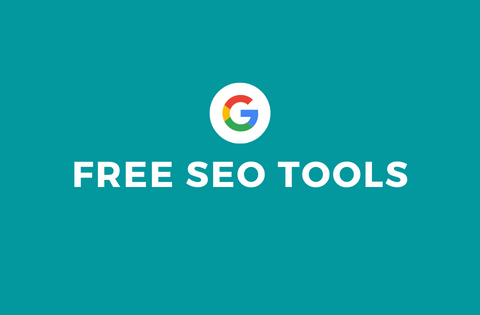What Is Answer Engine Optimization? A Simple Guide To AEO

If you are new to answer engine optimization, let me ask you something.
When was the last time you typed a full question into Google and got your answer right at the top without clicking anything?
Maybe it was “How many teaspoons in a tablespoon?” or “What time does the bank open on Saturday?” or even “Best budget laptop for college students 2025.”
You saw the answer. Instantly. Clearly. No links. No scrolling. Just done.
That is not luck, not magic. That is the work of answer engines.
And if you are running any kind of online business selling anything from skincare to software, coaching to cupcakes, you need to understand this shift.
Because search is no longer about showing ten websites. It is about showing one perfect answer and that is where Answer Engine Optimization comes in.
Think of AEO as SEO’s sharper, quicker, more helpful cousin.
Let us walk through this together. No jargon. No fluff. Just real talk with real examples you can use today.
What is Answer Engine Optimization?
Answer Engine Optimization, or AEO, is the practice of creating and structuring your content so that it gets picked up and shown directly by answer engines.
These include Google’s featured snippets, Bing’s instant answers, voice assistants like Siri and Alexa, and even AI tools like ChatGPT or Gemini.
Traditional SEO helps your page show up high in search results. AEO helps your content become the actual answer shown at the top.
Imagine someone types “How to clean white sneakers without bleach?”
Google shows a box at the top with three simple steps pulled straight from your blog.
You did not just rank. You answered and owned that moment. That is AEO.
Why Does This Matter Right Now?
Because how people search has changed fast. People do not want to click five links and read three articles to find what they need.
They want speed and clarity. They want one trusted source to tell them what to do.
According to Google, more than half of all searches are now phrased as questions.
People are talking to their phones, smart speakers, and laptops like they are asking a friend.
- “Hey Google, how do I check my tire pressure?”
- “Siri, what is the sales tax in California?”
- “Alexa, how long should I boil eggs for hard boiled?”
- Even on desktops, we type full sentences.
- “Why does my laptop overheat when I play games?”
- “What is the easiest accounting software for freelancers?”
This is not a trend. This is the new normal.
And if your website is not built to answer these questions clearly and directly, you are invisible when it matters most.
Also, with AI chatbots pulling answers from the web to respond to users, being the original source of those answers gives you authority, trust, and traffic.
You do not just want clicks. You want to be the answer people remember.
How Is AEO Different From SEO?
Let me make this crystal clear. SEO helps your page rank well when someone searches for a keyword.
AEO helps your content get chosen as the direct answer when someone asks a question. So here is the difference.
a) What is SEO?
Think of SEO like trying to get your shop listed on the first page of a big phonebook.
People search for something like “best pizza near me,” and if you did good SEO, your pizza place shows up somewhere in the top 10 results.
The person might click on you… or they might click on someone else. You’re just one option among many.
To do this, you write long blog posts, use popular keywords, and get other websites to link to you.
You check how many people visit your site and how long they stay.
b) What is AEO (Answer Engine Optimization)?
Now, AEO is totally different.
AEO is like being the one answer Google shouts out loud.
Imagine someone asks, “How do I make cheese pizza at home?” — and right at the top of the screen, Google shows a little box with YOUR 3-step recipe.
No clicking. No scrolling. Just BOOM — there’s your answer. That’s AEO.
The person asking doesn’t want to read five blogs. They want the answer. Fast.
So you write short, clear steps. Like a quick tip. Numbered lists. Bullet points. Super easy to read.
You don’t care as much about “how many visitors” — you care about “how many times did Google pick MY answer?”
And instead of keyword tools, you use tools that find real questions people ask — like “how to,” “what is,” “why does.” Then you add special code (called schema) that tells Google “Hey, this is the answer!”
So here’s the easiest way to remember it:
SEO = You are in the race.
AEO = You won the race and got the trophy.
One helps you show up. The other makes you the answer everyone sees first.
Think of it like this. SEO gets you a seat at the table. AEO gets you the microphone.
Both are important. But right now, the mic is where the attention is.
How Do Answer Engines Pick Which Content To Show?
They do not guess. They follow signals and here is what they look for.
First, your content must answer a specific question clearly and early.
If your paragraph begins with “To clean white sneakers without bleach, follow these three easy steps…” you are already ahead.
Second, structure matters. Use bullet points. Numbered lists. Clear headings. Short paragraphs.
Machines scan for patterns. Humans appreciate readability. Win win.
Third, trust and authority count. Sites with strong reputations, good backlinks, and consistent publishing are more likely to be chosen.
Fourth, use schema markup. This is code that tells search engines “this is a how to” or “this is a FAQ” or “this is a product guide.”
Fifth, your site must load fast and work perfectly on mobile. If your page takes forever to load or looks broken on a phone, you will not be picked even if your answer is perfect.
Sixth, freshness matters. For topics like tech, finance, or health, updated content is favored over old posts.
So AEO is not just about writing a great answer.
It is about making that answer easy to find, easy to read, and easy to trust.
How To Start Optimizing For Answer Engines?
Let us get practical. Step by step.
1. Find the real questions people are asking.
Do not guess. Research. Use free tools like:
- AnswerThePublic. It shows real questions people type into search engines.
- AlsoAsked.com. It pulls “People also ask” questions from Google.
- Google autocomplete. Start typing your topic and see what suggestions appear.
- ChatGPT. Ask it “What are common questions about [your product or service]?”
Example. If you sell yoga mats, do not write “Best Yoga Mats.” Write “What is the best non slip yoga mat for beginners?” or “How to clean your yoga mat without damaging it?”
Real questions. Real needs & Real intent.
2. Structure your answer like a pro.
Once you pick a question, answer it right at the top. In one or two sentences. Then explain further below like this.
Q. How long does it take to charge an electric scooter?
A. Most electric scooters take between 4 to 6 hours to fully charge using the included charger. Fast charging models may take as little as 2 hours.
Then you can add details, tips, comparisons, etc.
But put the gold up front. Also, format for scanning. Use bullet points. Number your steps. Bold your headings.
Machines love structure. So do humans.
3. Use schema markup. It is easier than you think.
Schema is code that helps search engines understand your content.
There is schema for recipes, FAQs, how to guides, products, events, and more.
If you use WordPress, plugins like Rank Math or Yoast SEO let you add schema with a few clicks.
Just select “this is a how to” or “this is a FAQ section” and you are done.
Why bother?
Because pages with schema are far more likely to appear as rich results. Those boxes with stars, prices, or steps right in the search results.
4. Optimize for voice search.
Voice search is growing every day. People speak differently than they type.
They use full sentences. Natural phrases. Conversational tone.
So write that way.
Instead of “yoga mat benefits,” try “What are the benefits of using a thick yoga mat?”
Also, keep answers short and simple.
Voice assistants usually read only the first one or two sentences. So put your best stuff up top.
5. Update your old content.
Do not just create new posts. Go back to your older articles.
Find the ones that answer common questions. Rewrite the opening to be more direct.
Add bullet points. Insert schema. Update facts or examples. Republish.
I have seen businesses double their answer impressions by updating just three old posts.
6. Track your progress.
Use Google Search Console. Go to Performance. Then click Search Results. Filter by Search Appearance and choose Rich Results or Featured Snippets.
See which pages are getting shown as answers. Which questions are triggering them?
Do more of what works.
Common Mistake In AEO and How To Avoid Them?
Even experienced marketers slip up. Here is what to watch for.
Mistake 1. Being too vague.
Bad. “There are several ways to save money on groceries.”
Good. “Here are five proven ways to cut your grocery bill in half. 1. Plan meals around sales. 2. Buy store brands…”
Specific. Actionable. Numbered.
Mistake 2. Hiding the answer.
Do not make users scroll past your story, your ad, or your sign up form to find the answer.
Put it at the very top.
Answer engines will not scroll either.
Mistake 3. Ignoring mobile.
More than 60 percent of searches happen on phones.
If your site is slow, cluttered, or hard to read on mobile, you are out of the game.
Test it. Fix it. Simplify it.
Mistake 4. Forgetting local intent.
“Where can I get gluten free pizza near me?” That is not just a question. It is a local one.
Make sure your Google Business Profile is updated. Add location based schema.
Include neighborhood or city names in your answers.
Mistake 5. Writing for robots instead of humans.
Yes, you are optimizing for machines. But the machine is serving a person.
Write like you are helping a friend. Warm. Clear. Helpful. Not robotic. Not salesy.
Helpful.
What Types of Content Work Best for AEO?
Not all content is built for answer boxes. Some formats just perform better and here is what works.
- Stats and data: “Average cost of car insurance in Florida.” If you cite sources and update yearly, you will get picked often.
- How to guides: “How to reset your router.” “How to remove red wine stains.” Step by step wins every time.
- FAQ pages: Dedicated FAQ sections with schema markup get pulled into voice search and AI answers constantly.
- Comparison posts: “MacBook Air vs Surface Laptop.” Structured comparisons with pros and cons are snippet gold.
- Listicles: “5 Best Free Tools for Social Media Managers.” Numbered lists are easy to extract and display.
- Definitions and explanations: “What is inflation?” “What does ESG stand for?” Short, textbook style answers win here.
Pro tip. Add a “Quick Answer” box at the top of your long form content. State the question in bold. Give the one or two sentence answer. Then say “Here is how it works…” and go deeper.
This satisfies both the machine and the human.
Real Example of AEO Done Right?
Let me show you some real world wins.
Example 1. Healthline
Search “how to lower cholesterol naturally.”
Healthline’s snippet appears with four clear steps in a numbered list. The page uses how to schema. Loads fast. Written in plain language.
Result? Millions of monthly impressions from that one answer box.
Example 2. NerdWallet
Search “how to start investing with little money.”
NerdWallet’s answer shows up in a clean box with bullet points. They use FAQ schema. They update the article every few months & they link to trusted sources.
Result? High trust. High clicks & High conversions.
Example 3. Your local business
Say you run a bike repair shop.
You write a post. “How to Fix a Flat Bike Tire at Home (Step by Step).”
You start with. “To fix a flat bike tire, you need a spare tube, tire levers, and a pump. Remove the wheel, take out the old tube, insert the new one, and inflate.”
You add bullet points. You add a short video & You add schema.
Now, when someone nearby searches “how to fix a flat bike tire,” your answer shows up with your shop name and phone number.
That is local AEO. And it brings customers to your door.
What Is Next? The Future of AEO
We are just getting started. As AI improves, answer engines will become more selective.
They will want more cited sources. more fresh content and more diverse viewpoints.
Also ore visuals like images, videos, or diagrams. and expect more personalized answers.
Your age, location, and past behavior may influence which answer you see.
That means hyper relevance will matter even more.
And for businesses? This is great news.
Because if you focus on being genuinely helpful, answering real questions in a clear and kind way, you will win.
Not because you tricked a bot but because you helped a human.
And that is what answer engines are starting to reward.
Action Plan, Your AEO Checklist
Ready to begin? Here is your simple checklist.
a) Pick five questions your customers actually ask.
b) Write direct, clear answers to each. Keep them under 50 words.
c) Put those answers at the top of your page or blog post.
d) Format with bullet points or numbered steps.
e) Add schema markup. Use a plugin if needed.
f) Make sure your site loads fast on mobile.
g) Update one old post this week using these tips.
h) Check Google Search Console in two weeks to see if you are getting answer impressions.
That is it. No magic. No mystery. Just clarity, structure, and usefulness.
Final Thoughts
Look, I understand. The marketing world loves to create new acronyms. But AEO is not hype.
It is evolution. People want answers. Quickly.
And if you can give them what they need in the clearest, most helpful way possible, you will stand out.
Not just in search results. But in their minds. As the brand that gets it.
That helps. That answers. So start small. Pick one question. Answer it well.
Watch what happens. You might be surprised how far a simple, honest answer can take you.



